Everything-in-life-is-Vibration
The Secret Scienceof Numerology
The_Meaning_of_Sacred_Geometry
Swami-Satyananda-Saraswati-Kundalini-Tantra
Chanting (e.g., mantra, sacred text, the name of God/Spirit, etc.) is a commonly used spiritual practice. Like prayer, chant may be a component of either personal or group practice. Diverse spiritual traditions consider chant a route to spiritual development.

Monks chanting, Drepung monastery, Tibet, 2013
Some examples include chant in African, Hawaiian, and Native American, Assyrian and Australian Aboriginal cultures, Gregorian chant, Vedic chant, Qur’an reading, Islamic Dhikr, Baha’i chants, various Buddhist chants, various mantras, Jewish cantillation, and the chanting of psalms and prayers especially in Roman Catholic (see Gregorian chant or Taizé Community), Eastern Orthodox (see Byzantine chant or Znamenny chant, for examples), Lutheran, and Anglican churches (see Anglican Chant).
Chant practices vary. Tibetan Buddhist chant involves throat singing, where multiple pitches are produced by each performer. The concept of chanting mantras is of particular significance in many Hindu traditions and other closely related Dharmic Religions. India’s bhakti devotional tradition centres on kirtan, which has a following in many countries and traditions such as Ananda Marga. The Hare Krishna movement is based especially on the chanting of Sanskrit Names of God in the Vaishnava tradition. Japanese Shijin (诗经), or ‘chanted poetry’, mirrors Zen Buddhist principles and is sung from the Dan tien (or lower abdomen) — the locus of power in Eastern traditions.
Sound Frequency & Vibration like mantra’s are Spells and Languages are based on spells & creation…

Sound & Words
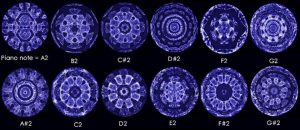
Words has Frequency and its Sound

Chakra System with Sacred Frequency Patterns
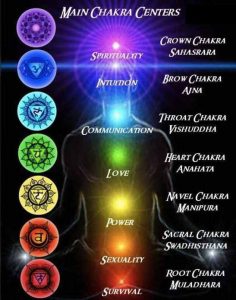
look at all those patterns
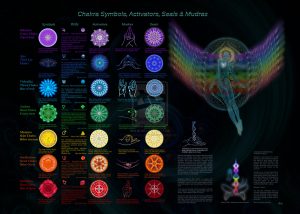
you can find these patterns everywhere..
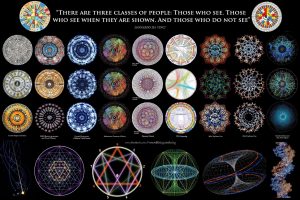
Water molecules interact also with sound and your body is made of 70 percent of water…

1. Septenary Numerology
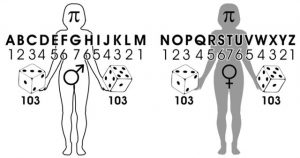
2. Chaldean Numerology
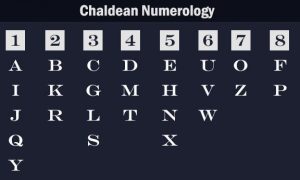
3. Pythagorean Numerology
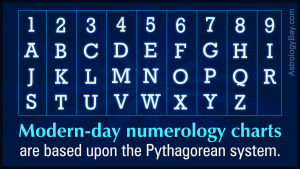
Numerology is any belief in the divine or mystical relationship between a number and one or more coinciding events.[2] It is also the study of the numerical value of the letters in words, names and ideas. It is often associated with the paranormal, alongside astrology and similar divinatory arts.[3]
Despite the long history of numerological ideas, the word “numerology” is not recorded in English before c.1907.[4]
The term numerologist can be used for those who place faith in numerical patterns and draw pseudo-scientific inferences from them, even if those people do not practice traditional numerology. For example, in his 1997 book Numerology: Or What Pythagoras Wrought, mathematician Underwood Dudley uses the term to discuss practitioners of the Elliott wave principle of stock market analysis.
Pythagoras and other philosophers of the time believed that because mathematical concepts were more “practical” (easier to regulate and classify) than physical ones, they had greater actuality. St. Augustine of Hippo (A.D. 354–430), wrote “Numbers are the Universal language offered by the deity to humans as confirmation of the truth.”[dubious ] Similar to Pythagoras, he too believed that everything had numerical relationships and it was up to the mind to seek and investigate the secrets of these relationships or have them revealed by divine grace. See Numerology and the Church Fathers for early Christian beliefs on the subject.
In 325 AD, following the First Council of Nicaea, departures from the beliefs of the state church were classified as civil violations within the Roman Empire. Numerology had not found favor with the Christian authority of the day and was assigned to the field of unapproved beliefs along with astrology and other forms of divination and “magic”.[citation needed] Despite this religious purging, the spiritual significance assigned to the heretofore “sacred” numbers had not disappeared; several numbers, such as the “Jesus number” have been commented and analyzed by Dorotheus of Gaza and numerology still is used at least in conservative Greek Orthodox circles.[5][6] However, despite the church’s resistance to numerology, there have been arguments made for the presence of numerology in the Bible and religious architecture. For example, the numbers 3 and 7 hold strong spiritual meaning in the Bible. The most obvious example would be the creation of the world in 7 days. Jesus asked God 3 times if he could avoid crucifixion and was crucified at 3 in the afternoon. 7 is the length of famine and other God-imposed events and is sometimes followed by the number 8 as a symbol of change.[7]
Some alchemical theories were closely related to numerology. For example, Persian-Arab alchemist Jabir ibn Hayyan framed his experiments in an elaborate numerology based on the names of substances in the Arabic language.[8]
Numerology is prominent in Sir Thomas Browne‘s 1658 literary Discourse The Garden of Cyrus. Throughout its pages the author attempts to demonstrate that the number five and the related Quincunx pattern can be found throughout the arts, in design, and in nature – particularly botany.
Modern numerology has various antecedents. Ruth A. Drayer’s book, Numerology, The Power in Numbers (Square One Publishers) says that around the start of the 20th century Mrs. L. Dow Balliett combined Pythagoras’ work with Biblical reference. Balliett’s student, Juno Jordan, helped numerology become the system known today as Pythagorean, although Pythagoras himself had nothing to do with the system, by publishing “The Romance in Your Name” in 1965, provided a system for identifying what he called key numerological influences in names and birth dates that remains used today. Other ‘numerologists’ including Florence Campbell (1931),[9] Lynn Buess (1978), Mark Gruner (1979), Faith Javane and Dusty Bunker (1979), Kathleen Roquemore (1985) expanded on the use of numerology for assessing personality or events. These different schools of numerology give various methods for using numerology.
Skeptics argue that numbers have no occult significance and cannot by themselves influence a person’s life. Skeptics therefore regard numerology as a superstition and a pseudoscience that uses numbers to give the subject a veneer of scientific authority.[2]
Two studies have been done investigating numerological claims, both producing negative results, one in the UK in 1993,[10] and one in 2012 in Israel. The experiment in Israel involved a professional numerologist and 200 participants. The experiment was repeated twice and still produced negative results.[11]
There are various numerology systems which assign numerical value to the letters of an alphabet. Examples include the Abjad numerals in Arabic, the Hebrew numerals, Armenian numerals, and Greek numerals. The practice within Jewish tradition of assigning mystical meaning to words based on their numerical values, and on connections between words of equal value, is known as gematria.
In one method, numbers can be assigned to letters of the Latin alphabet as follows:
…..and then summed. Examples:
A quicker way to arrive at a single-digit summation (the digital root) is simply to take the value modulo 9, substituting a 0 result with 9 itself.
The single digit then arrived at is assigned a particular significance according to the method used.
Different methods of interpretation exist, including Chaldean, Pythagorean, Hebraic, Helyn Hitchcock‘s method, Phonetic, Japanese, Arabic and Indian.
The examples above are calculated using decimal (base 10) arithmetic. Other number systems exist, such as binary, octal, hexadecimal and vigesimal; summing digits in these bases yields different results. The first example, shown above, appears thus when rendered in octal (base 8):
The Arabic system of numerology is known as Abjad notation or Abjad numerals. In this system each letter of Arabic alphabet has a numerical value. This system is the foundation of ilm-ul-cipher, the Science of Cipher, and ilm-ul-huroof, the Science of Alphabet:
ط=9 ح=8 ز=7 و=6 ه=5 د=4 ج=3 ب=2 أ=1
ص=90 ف=80 ع=70 س=60 ن=50 م=40 ل=30 ك=20 ي=10
ظ=900 ض=800 ذ=700 خ=600 ث=500 ت=400 ش=300 ر=200 ق=100
غ=1000
Some Chinese assign a different set of meanings to the numbers and certain number combinations are considered luckier than others. In general, even numbers are considered lucky, since it is believed that good luck comes in pairs.
Traditional Chinese Medicine (TCM), and its associated fields such as acupuncture, base their system on mystical numerical associations, such as the “12 vessels circulating blood and air corresponding to the 12 rivers flowing toward the Central Kingdom; and 365 parts of the body, one for each day of the year” being the basis of locating acupuncture points.[12]
Cantonese frequently associate numbers with the following connotations (based on its sound), which may differ in other varieties of Chinese:
Some “lucky number” combinations include:
In South India, mostly Tamil Nadu, the numbers assigned to English alphabets are different. The list is shown below:
There is no assignment for the number 9. Numerologists analyze double-digit numbers from 10 to 99.
Fifth generation (5G), a.k.a. New Radio (NR), uses the term “numerology” to describe the combination of subcarrier spacing and symbol length. For example, in NR(5G) several different numerology (i.e., different subcarrier spacing and symbol length) are supported whearas in LTE there is only one numerology.[13]
Scientific theories are sometimes labeled “numerology” if their primary inspiration appears to be a set of patterns rather than scientific observations. This colloquial use of the term is quite common within the scientific community and it is mostly used to dismiss a theory as questionable science.
The best known example of “numerology” in science involves the coincidental resemblance of certain large numbers that intrigued such eminent men as mathematical physicist Paul Dirac, mathematician Hermann Weyl and astronomer Arthur Stanley Eddington. These numerical coincidences refer to such quantities as the ratio of the age of the universe to the atomic unit of time, the number of electrons in the universe, and the difference in strengths between gravity and the electric force for the electron and proton. (“Is the Universe Fine Tuned for Us?”, Stenger, V.J., page 3[14]).
The discovery of atomic triads, an early attempt to sort the elements into some logical order by their physical properties, was once considered a form of numerology, and yet ultimately led to the construction of the periodic table. Here the atomic weight of the lightest element and the heaviest are summed, and averaged, and the average is found to be very close to that of the intermediate weight element. This didn’t work with every triplet in the same group, but worked often enough to allow later workers to create generalizations.
Large number co-incidences continue to fascinate many mathematical physicists. For instance, James G. Gilson has constructed a “Quantum Theory of Gravity” based loosely on Dirac’s large number hypothesis.[15]
Wolfgang Pauli was also fascinated by the appearance of certain numbers, including 137, in physics.[16]
British mathematician I. J. Good wrote:
There have been a few examples of numerology that have led to theories that transformed society: see the mention of Kirchhoff and Balmer in Good (1962, p. 316) … and one can well include Kepler on account of his third law. It would be fair enough to say that numerology was the origin of the theories of electromagnetism, quantum mechanics, gravitation…. So I intend no disparagement when I describe a formula as numerological.
When a numerological formula is proposed, then we may ask whether it is correct. … I think an appropriate definition of correctness is that the formula has a good explanation, in a Platonic sense, that is, the explanation could be based on a good theory that is not yet known but ‘exists’ in the universe of possible reasonable ideas.
The Origin of the Zodiac: (Astrology)
The zodiac (Greek: ζoδιακός, zōdiakos) is the term used to describe the circle of twelve 30° divisions of celestial longitude that are centred upon the ecliptic – the path of the sun. The term zodiac derives from Latin zōdiacus, which in its turn comes from the Greek ζoδιακoς κύκλος (zōdiakos kuklos), meaning “circle of animals”.
From the earliest of times, the zodiac has been universally used to predict or reflect characteristics of personality, whether from the Chinese, Mesopotamian, Indus Valley, Egyptian or any other culture, echoing the ancient philosophy ‘As above – so below‘… what we today call astrology.
Astrology, in its broadest sense, is the search for purpose in the heavens.
We know from ancient records that the Greeks inherited their knowledge of the heavens primarily from the Mesopotamians, who in turn inherited their knowledge from the Sumerians. But is there any evidence of the heavenly constellations in art or culture from before this time. Remarkably, it has been proposed that the images at Lascaux and other nearby Palaeolithic sites show exactly that…
The Lascaux Planetarium.
Near to the entrance of the Lascaux cave complex is a magnificent painting of a bull. Hanging over its shoulder is what appears (to us) to be a map of the Pleiades, the cluster of stars sometimes called the Seven Sisters. Inside the bull painting, there are also indications of spots that may be a representation of other stars found in that region of sky. Today, this region forms part of the constellation of Taurus the bull.
In recent years, new research has suggested that the Lascaux paintings may incorporate prehistoric star charts. Dr Michael Rappenglueck of the University of Munich argued that some of the non-figurative dot clusters and dots within some of the figurative images correlate with the constellations of Taurus, The Pleiades and the grouping known as the “Summer Triangle”. Based on her own study of the astronomical significance of Bronze Age petroglyphs in the Vallée des Merveilles and her extensive survey of other prehistoric cave painting sites in the region — most of which appear to have been specifically selected because the interiors are illuminated by the setting sun on the day of the winter solstice — French researcher Chantal Jègues-Wolkiewiez has further proposed that the gallery of figurative images in the Great Hall represents an extensive star map and that key points on major figures in the group correspond to stars in the main constellations as they appeared in the Palaeolithic leading to the remarkable suggestion of a direct transfer of information for over 17,000 years.
| The Origin of the Zodiac: |
While there are currently 88 constellations officially by the IUA recognised today (9), this page is concerned only with the origin of the 12 constellations that make up the modern zodiac.
The classical map of the sky, with the 48 Greek constellations, was derived from at least two different pre-Greek traditions. One tradition comprised the 12 signs of the zodiac, with several associated animalconstellations, all of which developed over 3,200-500 BC in Mesopotamia in a religious or ritual tradition. These were taken over by the Greeks around 500 BC. However the other Babylonian constellations, their farming-calendar tradition, were not adopted. The other tradition was not Mesopotamian; it comprised large constellations which appear to date from 2,800 BC, probably from the Mediterranean region, devised for the navigators of ships. They include huge bears and serpents which marked the celestial pole and equator at that time, and probably the four anonymous giants which we know as Hercules, Ophiuchus, Bootes, and Auriga, as well as some of the large southern ‘marine’ constellations. The origins of some other constellations, including the Perseus tableau and various animals, are unknown. (11) It is therefore currently concluded that among the Indo-European peoples, astrology dates to the third millennium BC. (4) This is supported by the following research.
‘There has been much speculation as to the origin of the constellations. Until recently it has usually been assumed that they evolved from the fancies of primitive imaginations, but research now suggests that they were designed as a pictorial scientific coordinate system. A coordinate system is a set of imaginary lines for measuring positions, like the lines of latitude and longitude for determining locations on the earth. The constellations perform a similar function, but they employ pictures, which make it easy to identify stars without need of instruments. Moreover, this evidence points to a time and place that they originated: about 2700 B.C at about 36° north latitude. There are three main lines of evidence that point to this date and location’. (10)
The Empty Part of the sky. There is a circle of about 36° radius in the southern part of the sky which does not contain any of the original 48 constellations. That implies that the originators of the constellations lived at about 36° north latitude because at that location, exactly such an area of southern sky would be invisible to them. Moreover, the centre of that circle moves very slowly through the sky because of the motion of the earth’s axis. The location of the centre of the empty part of the sky implies an origin date of about 2,900 B.C.
Slanted Constellations. Many of the constellations are tipped at an angle to the natural directions of north, east, south and west. If one asks if there was a time and place when they would have all been much aligned vertically and horizontally, the answer is, about 2,900 B.C. Note that this is an entirely different line of reasoning, but it yields a very similar date and location of origin. Moreover, several of the constellations mark astronomically important areas at the date. For example, the long snake Hydra would have coincided with the circle called the celestial equator.
Star risings and settings. The ancient Greek poet Aratus states that certain stars rise at the same time, or set at the same time, or that one rises as another sets on opposite points on the horizon. Because of the earth’s precession, such coincidences depend on both the location on the earth and on the date of observations. Using statistical methods, it has been found that Aratuswas describing the stars at a latitude of about 36° (within about 2°) at about 2,600 B.C. (within 800 years).
Evidence points to an origin on Latitude 36°, which is near perfect for Sumeria (the civilization from which Babylon inherited much of its science). Accordingly, the Sumerians are currently credited with originating the constellations. It is important to recognise that the Sumerians also divided both time and space with the Hexadecimal system resulting in a 360° division of the globe and heavens.
Of particular interest in relation to this is is the location of the capital city of the Assyrian empire (Nimrud), which was founded by King Shalmaneser I (1274 BC – 1245 BC). It became the Assyrian religious capital in 875 BC by Ashurnasirpal II. It also happens to be be placed 6° to the North and 12° to the East of the Egyptian anchor point of Giza/Heliopolis (12) revealing the complex system of geodetic placement in operation at that time (based on a 360° division of the globe). Perhaps also no coincidence that the longitude of Nimrud is also the same as the exterior angle of both Snoferu’s pyramids.
Nimrud – (36° 06’ N, 43° 20’ E).
The Babylonian MUL.APIN. (‘The Shining Herd’)
Having established that astrology (the 12 constellations) originated in Sumeria, it is worth investigating if this represents the true origins of the zodiac. It is known that Babylonian astrology developed within the context of divination. A collection of 32 tablets with inscribed liver models, dating from about 1,875 BC, are the oldest known detailed texts of Babylonian divination, and these demonstrate the same interpretational format as that employed in celestial omen analysis. (6)However, we are also told that another influence can be seen in Sumeria from before that time, an influence that is suggestive of geometry, longitude and latitude. (11)
The Sumerians called the twelve major zodiacal constellations the ‘Shiny herd’.
The first official inscribed version of a Babylonian compendium is from 86 BC, but by using modern astronomical techniques an astronomer at Louisiana State University has dated the original observations to 1,370 BC, give or take 100 years. He also says the observations were made within 100km of 35.1° N. The tablets record the day of the year that certain groups of stars, or constellations, appear in the sky at dawn. These constellations are widely thought to be the precursors of the modern Signs of the Zodiac. (1), However, Babylonian art is resplendent with images of Lions, Scorpions, Rams, and Bulls, dating back much further suggestive of a much earlier recognition of the zodiac symbols.
The Armenian Zodiac:
While it is traditionally claimed that the earliest reference to the zodiac originates with the Babylonians, the discovery of an observatory in Metsamor, Armenia, predating the Babylonian kingdom by almost 2,000 years has changed our perception of events as the observatory at Metsamor apparently contains the first recorded example of dividing the year into 12 sections. Using an early form of geometry, the inhabitants of Metsamor were able to create both a calendar and envision the curve of the earth. (13)
The discovery of the astronomical ‘observatory’ at Metsamor and the presence of engravings which have been speculatively called ‘zodiac creatures’ has given credence to the assertion that the ancient figures of the constellations were probably created by ancient peoples living in the Euphrates valley and near Mount Ararat in eastern Anatolia and Armenia: Rick Ney, the author of ‘Karahundj, The Armenian Stonehenge’, says of it:
“Parsamian’s discovery at Metsamor, and the stones at Sissian give concrete credence to Maunder’s and Olkott’s theories, especially when coupled with ca. 4,000–3,000 BC stone carvings of zodiac figures on rocks on the Geghama Mountain Range in Armenia.” (15).
(More about Metsamor, Armenia)
| Other Early Astrologers |
| Biblical References:
There have been suggestions that the Bible contains hidden allegories to describe astronomical events. Indeed a calculation of Biblical chronologies led the Bishop Usher to announce a date of 4004 BC as the creation date. A date not too far from the its start date was calculated at 4,004 BC (by James Usher), a date only 200 years short of the start date of the age of Taurus on the precessional clock and the same time several ‘Bull cults’ appeared in the historical record. E. W. Bullinger interpreted the creatures appearing in the books of Ezekiel and revelation as the middle signs of the four quarters of the Zodiac, with the Lion as Leo, the Bull is Taurus, the Man representing Aquarius and the Eagle representing Scorpio. ‘As for the likeness of their faces, each had the face of a man in front; the four had the face of a lion on the right side, the four had the face of an ox on the left side, and the four had the face of an eagle at the back’. (Ezek. 1:10) Some authors have linked the twelve tribes of Israel with the twelve signs of the zodiac. It is arguable that the large emphasis placed on Moses and the Israelites ‘escape’ from captivity is because it was at this very time (as it was later at the time of Christ), that the astrologers of the time were aware of a change in the precessionary clock (From the age of Taurus to the age of Aries) an event which would have been proclaimed with prophesies and predictions. When Moses was said to have descended from mount Sinai with the ten commandments, some of his people or followers were found by him to be worshipping a golden bull calf. He instructed these false idol-worshippers to be killed. This is said to represent Moses “killing” the bull and ending the Age of Taurus, thus ushering in the Age of Aries. The new Testament concerns itself with the next zodiac sign, Pisces, through the coming of Christ. It is no coincidence that one of the enduring signs for Christianity is the fish.
|
The Hindu Zodiac:
The names of the Hindu zodiac and corresponding Greek signs sound very different, being in Sanskrit and Greek respectively, but it has been long recognised that their symbols are identical. For example, dhanumeans “bow” and corresponds to Sagittarius, the “archer”, and kumbhameans “water-pitcher” and corresponds to Aquarius, the “water-carrier”. The correspondence of signs is taken to suggest the possibility of early interchange of cultural influences, but while it is generally assumed that the similarity between the symbols in both systems is because of a Greek presence c. 50 BC, but it is contended this is supposition, and that there is clear evidence of trading between the Sumerian and Babylonian cultures and the Indus Valley Culture millennia before the Greeks were ever in Asia, and the Sumerians have a record of Astrological symbols that dated back to c. 2,000 BC. B. G.
Sidhartha (14) points out that there are several references to the zodiac in the Rg Veda and Mahabharata, both of which are ancient texts which predate any Greek influence in Asia. He said of it:
‘A Rg Vedic hymn refers to the twelve fixed parts of the wheel and also to the twelve forms in connection with the sun. The hymn next describes the twelve lunar months specifically mentioning the thirteenth additional month required in this scheme. A Rg Vedic hymn to the Asvins, quoted in the Mahabharata, also refers to the twelve zodiac signs. Undoubtedly, the twelve zodiacal signs were known. Other hymns support this conclusion. This is probably the origin of the later conception of the twelve Adityas or Sun Gods’.
(More about Prehistoric India)
The Chinese Zodiac:
The Chinese animal zodiac, or sheng xiao in pinyin (literally translated as “born resembling”), is (rather interestingly) a rotating cycle of 12 years, with each year being represented by an animal and its reputed attributes. Scientifically speaking, the “Chinese Zodiac” could be said of as a way of dividing the “Jupiter Year” because it takes 12 years for Jupiter to complete one orbit the sun. The Chinese calendar counts years in cycles of sixty years. Each year has a label consisting of two parts. The first component is the celestial stem being one of the five elements. The second component is the terrestrial branch being one of the twelve animal (zodiac) signs. The equation becomes five multiplied by twelve equalling sixty, or one cycle in the Chinese calendar. (3)
The legend of the origin of the Chinese zodiac says that Buddha (other versions say the Jade Emperor of Heaven) once invited all the animals to a race; the first twelve would be included in the Zodiac calendar. It’s known from pottery artefacts that the animals of the zodiac were popular in the Tang Dynasty (618-907 AD), but they were also seen much earlier from artefacts from the Warring States Period (475-221 BC). It’s been written that the animals of the zodiac were brought to China via the Silk Road, the same central Asian trade route that brought the Buddhist belief from India to China. But some scholars argue that the belief predates Buddhism and has origins in early Chinese astronomy that used the planet Jupiter as a constant, as its orbit around the earth took place every 12 years. Still others have argued that the use of animals in astrology began with nomadic tribes in ancient China who developed a calendar based on the animals they used to hunt and gather.
The late date of origin suggests that the Chinese inherited the Indo-European concept of the zodiac and adopted it into their own belief system.
(More about Prehistoric China)
| Modern Astrology: |
Astrology is still considered a pseudo-science in the west, but not in other parts of the world, such as India for example, where In 2001, Indian scientists and politicians debated a proposal to use state money to fund research into astrology, resulting in permission for Indian universities to offer courses in Vedic astrology. In February 2011, the Bombay High Court reaffirmed astrology’s standing in India when it dismissed a case which had challenged its status as a science. (7)
Jung and Astrology:
Jung managed to bring astrology into the forum of science through his research into the symbolic meaning of his patient’s dreams, conversations and paintings. Jung observed recurring mythical themes or archetypes. He proposed that these universal and timeless archetypes channel experiences and emotions, resulting in recognizable and typical patterns of behaviour with certain probable outcomes. Jung claimed to observe a correlation between these archetypal images and the astrological themes or traditional ‘gods’ associated with the planets and signs of the zodiac. He concluded that the symbolic heavenly figures described by the constellations were originally inspired by projections of images created by the collective unconscious.
Jung’s psychological astrology still links the psyche to the cosmos, but it is not deterministic. Nor is an individual’s everyday life ruled by the positions of the planets.
He wrote “Astrology represents the sum of all the psychological knowledge of antiquity”. (8) But he also recognised a subtle difference with traditional astrology in that he believed that astrological claims of correlations between the position of heavenly bodies at the time of birth and an individual’s development were acausal and not actually directly caused by the planets. Something which led him to develop his concept of Psychological Astrology, which Jung compared to Aristotle’s formal causation, which posed that “whatever is born or done at this particular moment of time, has the quality of this moment of time”.
In 1949 Bertram Forer conducted a personality test on students. While seemingly giving the students individualized results, he instead gave each student exactly the same sheet that discussed their personality. The personality descriptions were taken from a book on Astrology. When the students were asked to comment on the accuracy of the test with a rating more than 40% gave it the top mark of 5 out of 5, and the average rating was 4.2. The results of this study have been replicated in numerous other studies.
https://www.youtube.com/watch?v=MQ5I3Q8axgE&list=PL8rGkPnahuZ_fyEXkvmvkoNtuGg90fdu7